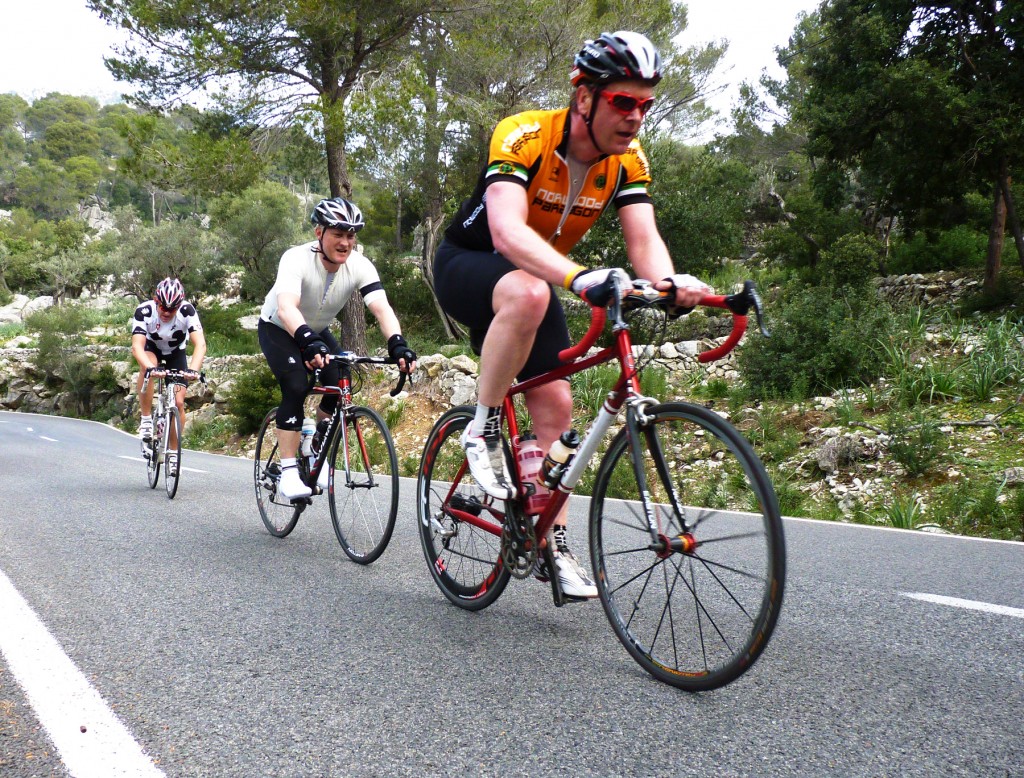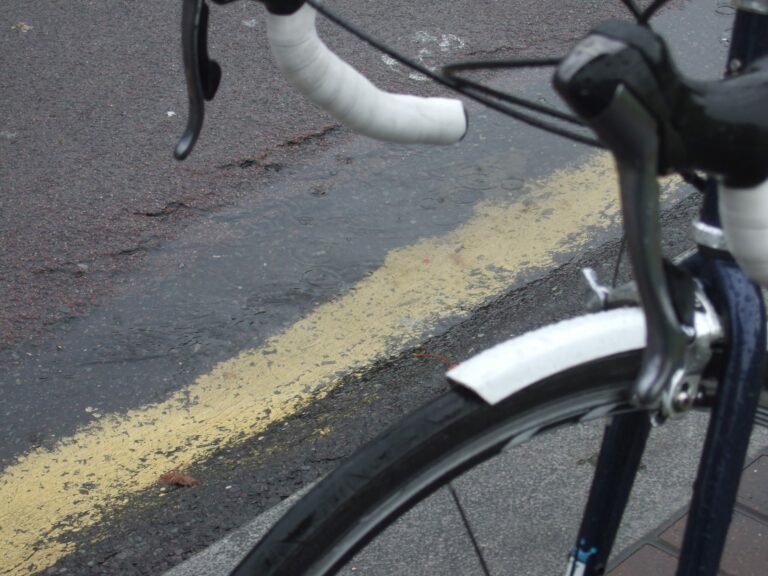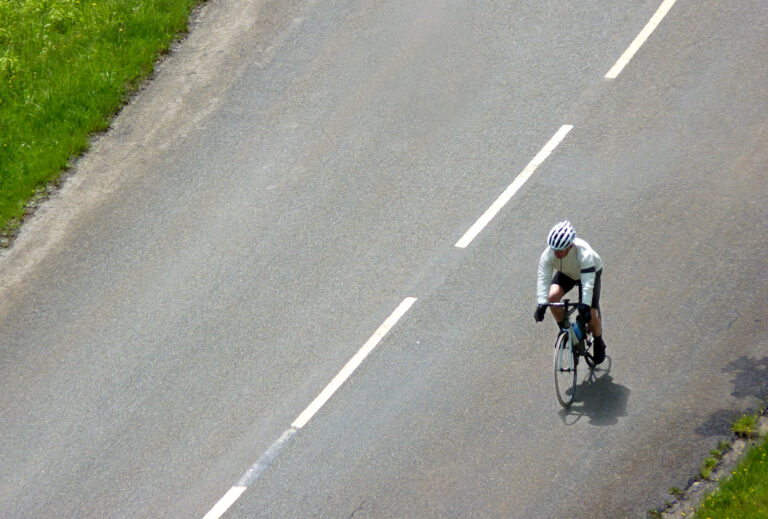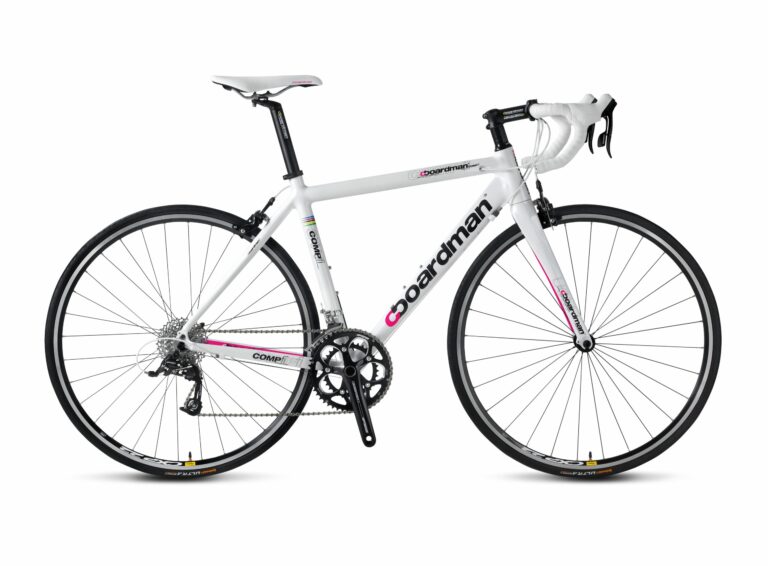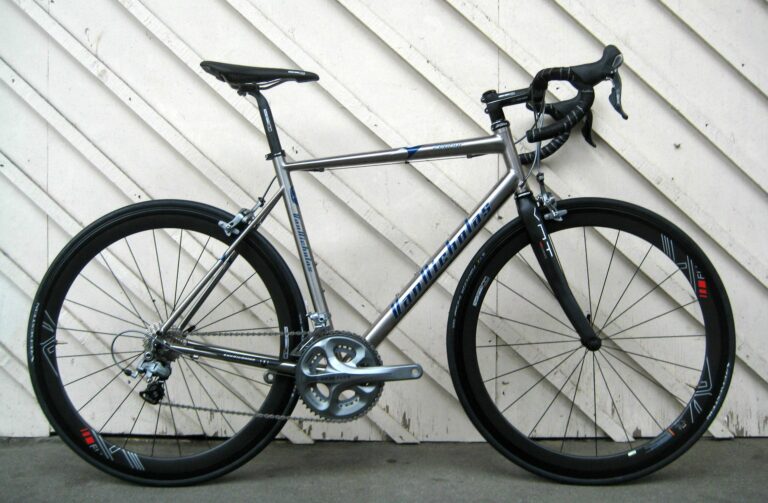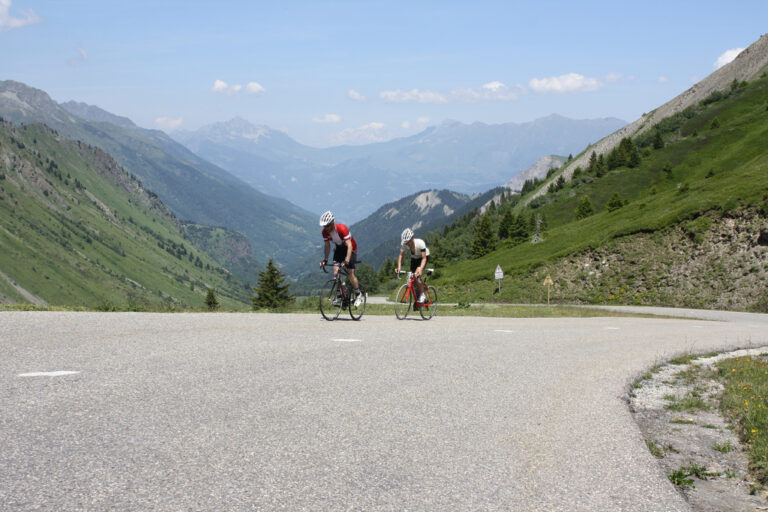
- Cycle training
There is a great saying, whose origin escapes me; it states that ‘If you don’t know where you’re going, you’ll end up somewhere you don’t want to be.’ In training terms, this means you need to set yourself goals. With no goal to work towards, your training lacks focus and any improvements in your riding will be very much slower than they would be if you were working toward a specific target. Goals are great for focusing your training and helping you work systematically and logically towards achieving them. They provide structure and realistic stepping-stones toward reaching your target.
Remember the rider in part 1 who couldn’t see any possibility of getting from his current standard of ability to being able to complete a century? That’s because the gap between those two extremes was so wide he couldn’t see a possible bridge between the two. Setting goals can help you with this. Consider the following.
If your goal is to ride a 100 mile hilly sportive in three months’ time and you can currently only manage 40 miles, the goal might seem unattainable. You become disillusioned and may not even embark on the challenge.
But putting some short, medium and long-term goals in place paints a very different picture.
Consider this typical statement from an ambitious but inexperienced club rider;
“I’d like to enter a 100 mile hilly sportive but I can currently only ride 40miles in moderately hilly terrain.”
Then set some suitable goals:
Short-term: In 4 weeks – I will aim to complete 60 miles moderately hilly
Medium term: In 8 weeks – I will ride 75 miles slightly hillier
Long term: In 12 weeks – I will complete a 100 mile hilly sportive
Suddenly that doesn’t look so frightening, does it? In each four-week block you’re aiming to increase your riding distance by around 15 to 20 miles. That’s just 5 miles per week. Easy.
Lets go further:
Short term: In 4 weeks – Introduce core strength and flexibility exercises and lose 2lbs in weight). Work on technical exercises (pedaling efficiency and descending/bike handling skills). Complete 60 miles hilly.
Medium term: In 8 weeks – Continue with the above but introduce strength exercises and further technical exercises (climbing efficiency/group riding skills). Loose a further 1lb in weight. Complete 75 miles hilly ride.
Long-term: In 12 weeks – Continue with the above but introduce further technical exercises and climbing speed, loose further 1lb in weight. Complete a 100 mile hilly sportive.
Now you have a training plan in place which not only gets you riding 100 miles, but you’ll have lost a few pounds in weight (and believe me those pounds will make a significant difference to your performance on a hilly sportive) plus you have a better diet and improved technical skills – all things which will greatly contribute to making you a much better rider. Not just for the sportive in 12 weeks, but for the much longer-term.
As you’ve probably noticed, these are fairly modest goals, and for a reason; they’re realistic and achievable. Set your goals too high and constantly failing to achieve them will lead to disappointment and you’ll give up. They should be challenging but achievable. If you’re in your late forties and have only been riding for a couple of years, it’s probably not realistic to set yourself the goal of making the podium of the Olympic road race at London 2012, is it?
Be patient, set your goals out over a realistic period and keep in mind that small, regular improvements are more sustainable and longer lasting. Also record your goals and tick them off as you achieve them, write down what you aim to achieve and the dates of when you want to achieve them by. Time-phasing your goals and recording them in this way can be highly motivating, as you have a clear record of your improvement.
Part 1: Going for Centuries
Part 2: Breaking down the barriers
Part 4: Intensity
Part 5: Get in the Zone
Part 6: Performance Testing
Part 7: Creating a training plan
Part 8: Weekly training plans
Part 9: Be a better climber
About the author:
Huw Williams is a British Cycling Level 3 road and time trial coach. He has raced on and off road all over the world and completed all the major European sportives. He has written training and fitness articles for a wide number of UK and international cycling publications and websites and as head of La Fuga Performance, coaches a number of riders from enthusiastic novices to national standard racers.
Contact: [email protected]

